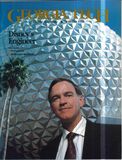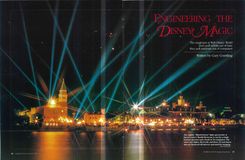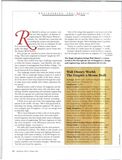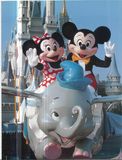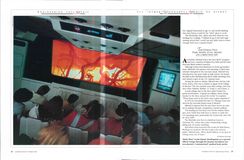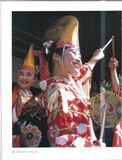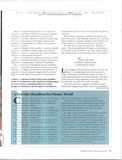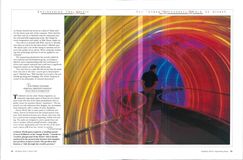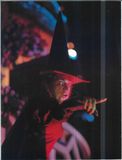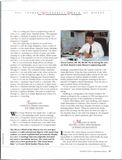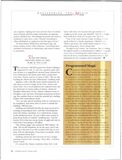Disney’s magicians don’t pull rabbits out of hats, they pull printouts out of computers. And a Tech engineer directs them.
[img]COVER: Rob Mitchell directs the team of innovative engineers that make Disney World the number one vacation spot. Read about his work, beginning on page 20.[/img]
Rob Mitchell is always on vacation – not his, but other people's. As director of engineering for Walt Disney World in Orlando, Fla., Mitchell has a principal role in creating the unique and spectacular attractions that lure an estimated 25 million vacationers a year to Disney’s three theme parks: the Magic Kingdom, Epcot Center and the Disney/MGM Studios.
Most people are surprised to learn what he does for a living. “They have engineers at Disney?” laughs the 1971 industrial engineering graduate.
“People don’t realize how big a challenge engineering is within the Disney company,” says Mitchell, who also has a master’s in management from Rollins College. “Unlike a lot of other parks and entertainment companies, we do almost all of our design in-house.
“The challenge doesn’t stop when the facility is built,” he adds. “We're continually trying to improve it, make it more reliable, improve the quality of the show. Almost all of the shows have been improved through the years to make them more reliable and a better experience for our guests.”
Mitchell heads a staff of about 140 engineers and designers organized into three areas: ride and show engineering, facilities engineering and industrial engineering. The first two groups are concerned with the development and maintenance of the park itself and its attractions, and the third group provides internal consulting.
“I think we’ve got one of the best engineering organizations in the world,” he says. “We’ve had good luck in attracting very strong, competent engineers. We attract a very energetic type of engineer – I'd say our energy level is extremely high.
“We’ve been fortunate to find a mix of recent graduates from schools like Georgia Tech, and more-experienced engineers who have spent many years working in various areas of engineering. We have engineers in virtually every discipline – civil, mechanical, structural, electrical, machine design – you name it.
The skills may sound familiar, but the end products are anything but ordinary. The ability to take people on a ride across a primordial swamp past fighting dinosaurs, or through 2,000 years of history, or 20,000 leagues under the sea requires a tremendous amount of creativity.
“A lot of engineering jobs are monotonous, and require repetitive and uncreative thought,” Mitchell says, “but this one is just the opposite.
[…]
